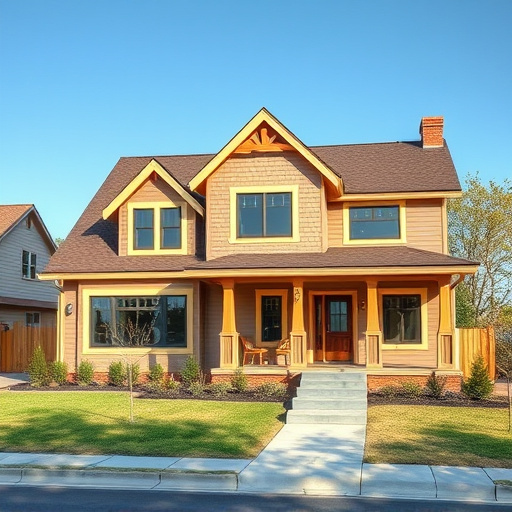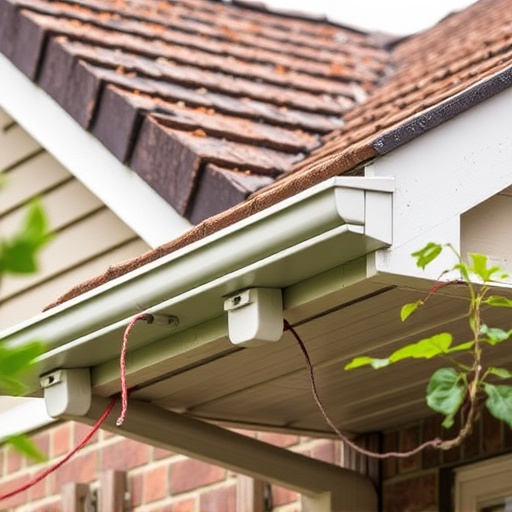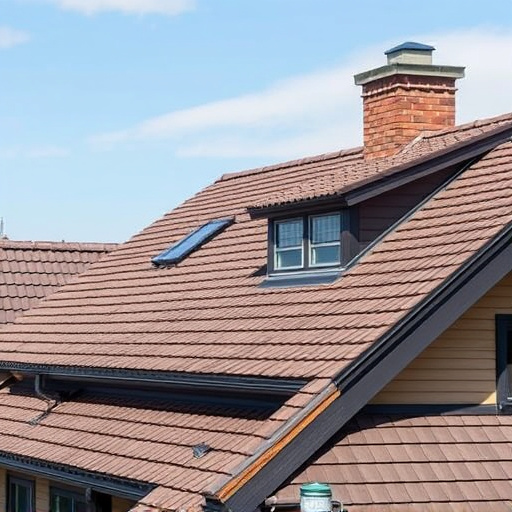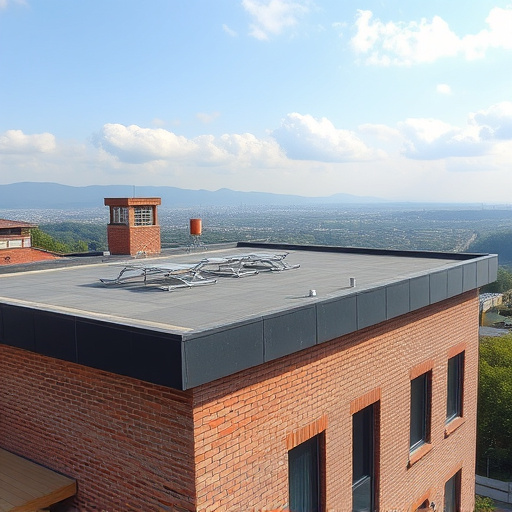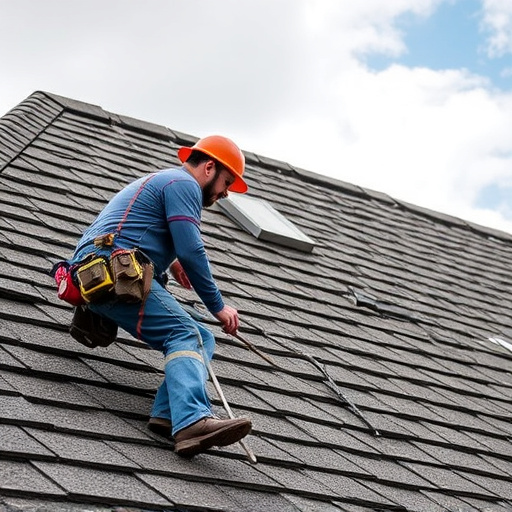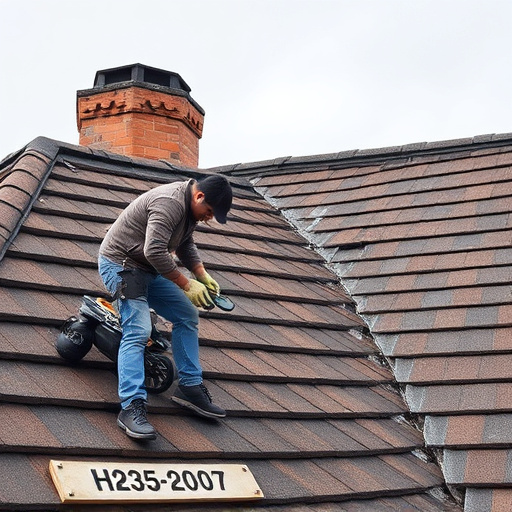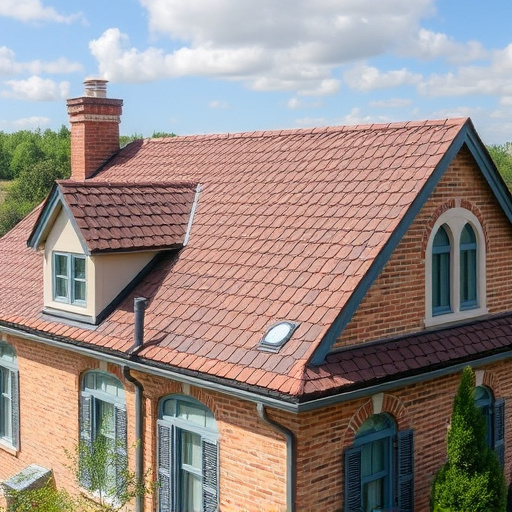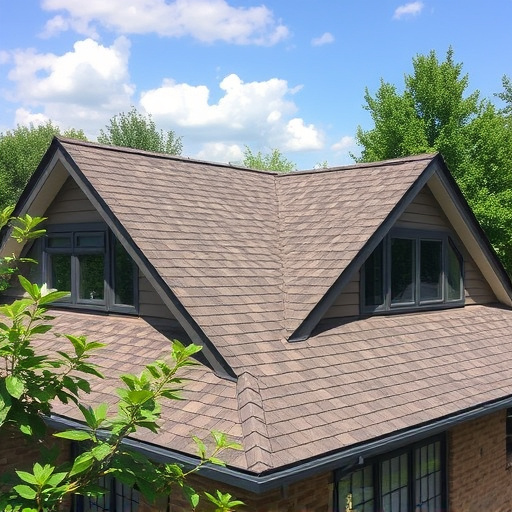Proper roof installation requires effective ventilation to manage dust, debris, and VOCs, ensuring worker safety and minimizing health risks for homeowners. Adequate airflow prevents heat buildup, moisture accumulation, mold growth, and wood rot, enhancing roofing durability and saving energy costs. Prioritizing ventilation during roof installation is a smart investment for long-term home protection.
Roof installation work can significantly impact indoor air quality, posing potential health risks to both occupants and construction workers. Understanding the crucial role of ventilation during this process is essential. This article delves into the environmental and safety implications of roof installations, highlighting why proper ventilation matters. We explore how effective ventilation not only ensures worker safety but also contributes to the long-term durability of roofs, ensuring a healthier and more sustainable living space.
- Understanding Air Quality Impact During Roof Installation
- Key Roles of Ventilation in Ensuring Worker Safety
- Long-Term Benefits of Proper Ventilation for Roof Durability
Understanding Air Quality Impact During Roof Installation

During roof installation, understanding the air quality impact is crucial. The process can generate a significant amount of dust, debris, and volatile organic compounds (VOCs) due to the handling of materials like asphalt shingles, wood, and various chemicals used in roofing adhesives and coatings. These pollutants can not only affect the health of workers but also infiltrate the interior of homes, leading to poor air quality within living spaces. In terms of exterior home improvements, proper ventilation is key to mitigating these issues.
Effective ventilation during roof installation ensures that harmful substances are swiftly displaced, preventing their accumulation inside or near the work area. It includes the use of exhaust fans, temporary vents, and other mechanical means to draw out contaminated air and replace it with fresh, outdoor air. This practice not only enhances worker safety but also contributes to the overall quality of roofing and siding installations, as well as roof repair projects, by minimizing the risk of long-term health issues for homeowners.
Key Roles of Ventilation in Ensuring Worker Safety

Proper ventilation plays a pivotal role in maintaining a safe work environment during roof installations. As workers navigate the steep angles and intricate details of roofing, ensuring adequate air circulation is essential for several reasons. Firstly, it helps control the buildup of harmful fumes from solvents, adhesives, or other chemicals used in the process. Roof installation often involves working with potentially toxic materials, and proper ventilation minimizes the risk of inhalation, which can lead to severe health issues.
Secondly, sufficient airflow prevents the accumulation of warm air trapped under the roof deck. This is crucial as it helps avoid heat-related illnesses and ensures workers remain comfortable throughout the day. In the realm of exterior home improvements, where professional siding services are in demand, proper ventilation contributes to the longevity of the roofing system. By eliminating moisture buildup, it prevents mold growth and structural damage, ensuring the roof remains a reliable component of home service solutions for years to come.
Long-Term Benefits of Proper Ventilation for Roof Durability

Proper ventilation during roof installation is a key factor in ensuring long-term durability and performance of your roofing system. By allowing for adequate airflow between the interior and exterior of a home, moisture buildup is prevented, which can lead to mold growth, wood rot, and other damage over time. This is especially crucial in regions with high humidity levels or where significant snowfall occurs, as these conditions require effective temperature regulation within the attic space.
Regular ventilation also helps maintain consistent temperatures throughout the year, reducing the load on HVAC systems. For homeowners considering exterior home improvements like roof replacement or residential siding installation, prioritizing proper ventilation can save money in energy costs and extend the lifespan of newly installed roofing materials. Effective ventilation is a silent guardian that safeguards your home from unseen damage, ensuring peace of mind and preserving the investment you’ve made in your property.
Proper ventilation during roof installation is not just a safety measure; it’s an investment in both worker well-being and the long-term durability of the structure. By understanding the impact on air quality, recognizing the critical roles of ventilation in ensuring safe working conditions, and appreciating the lasting benefits for roof longevity, you can ensure that your roof installation projects are not only efficient but also environmentally friendly and sustainable.

